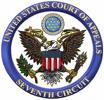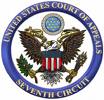The Verdict? A Very Successful Civil Trial Conference
 One of this Law School’s most noteworthy legacies is its production of many of the region’s most outstanding trial lawyers. The legacy was fully evident on Friday, November 6, 2009 at the Civil Trial Evidence and Litigation Conference. The sold-out event served as a “last call for Sensenbrenner Hall” of sorts while featuring a panel that well-represented the many fine trial lawyers who have distinguished themselves as Marquette lawyers. It was my privilege to help organize the conference along with Pat Dunphy (L’76), who conceived of the idea and was the key to assembling the talented panel of Marquette alumni. In light of Friday’s success, Pat and I have already begun discussing next year’s civil litigation conference, which will be held in the Law School’s new venue in Eckstein Hall.
One of this Law School’s most noteworthy legacies is its production of many of the region’s most outstanding trial lawyers. The legacy was fully evident on Friday, November 6, 2009 at the Civil Trial Evidence and Litigation Conference. The sold-out event served as a “last call for Sensenbrenner Hall” of sorts while featuring a panel that well-represented the many fine trial lawyers who have distinguished themselves as Marquette lawyers. It was my privilege to help organize the conference along with Pat Dunphy (L’76), who conceived of the idea and was the key to assembling the talented panel of Marquette alumni. In light of Friday’s success, Pat and I have already begun discussing next year’s civil litigation conference, which will be held in the Law School’s new venue in Eckstein Hall.
The presentations spanned a broad array of issues and problems regularly confronted in civil litigation. The strength of the presentations rested not just in their discussion of doctrine and rules, but in the panelists bringing to bear their experience and insights in preparing and trying cases. Links to the written CLE material and the accompanying PowerPoint presentations will be posted on the Law School’s website later this week.
Starting the day was Michael J. Cohen (L’86) of Meissner Tierney Fisher & Nichols SC, who underscored the important relationship between pretrial practice and outcomes at trial. Drawing on his extensive experience as a commercial litigator, Mike addressed the duty to preserve evidence, especially electronic information, when a lawsuit appears on the horizon. Mike emphasized the need to work with the client to understand what the law requires so that discoverable information is not destroyed, inadvertently or otherwise, thereby exposing the client (or counsel) to sanctions. Pat Dunphy (L’76) of Cannon & Dunphy SC, addressed a different aspect of pretrial practice, namely, the creative use of requests to admit during discovery. Pat described how he used requests to admit to obtain a binding judicial admission in a major product liability case that proved determinative of its outcome.

 The court staked out no new legal ground in its opinions last week, so I’ll just briefly describe a case that nicely illustrates a classic problem in evidence law. Based on information provided by a confidential informant, Milwaukee police stopped a Ford Excursion on suspicion of drug activity. Inside were Marc Cannon (the driver), David Harris (Cannon’s cousin), $8,900 in cash (found in Harris’s pockets), and a brick of cocaine. The cash pointed to Harris’s likely involvement in the drug-dealing operation, but, without more, the evidence still seems short of beyond a reasonable doubt.
The court staked out no new legal ground in its opinions last week, so I’ll just briefly describe a case that nicely illustrates a classic problem in evidence law. Based on information provided by a confidential informant, Milwaukee police stopped a Ford Excursion on suspicion of drug activity. Inside were Marc Cannon (the driver), David Harris (Cannon’s cousin), $8,900 in cash (found in Harris’s pockets), and a brick of cocaine. The cash pointed to Harris’s likely involvement in the drug-dealing operation, but, without more, the evidence still seems short of beyond a reasonable doubt.  Criminal law and procedure are structured around the act requirement: a defendant is prosecuted for performing a specifically identified unlawful act, the criminal trial is designed to determine whether the defendant actually committed that act, and, once the defendant has been convicted and punished, we commonly say that he has paid his debt to society and should be relieved from any additional punishment for the act (a principle that is roughly codified in the Double Jeopardy Clause). The act, not the person, is the basic unit of analysis.
Criminal law and procedure are structured around the act requirement: a defendant is prosecuted for performing a specifically identified unlawful act, the criminal trial is designed to determine whether the defendant actually committed that act, and, once the defendant has been convicted and punished, we commonly say that he has paid his debt to society and should be relieved from any additional punishment for the act (a principle that is roughly codified in the Double Jeopardy Clause). The act, not the person, is the basic unit of analysis.